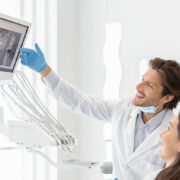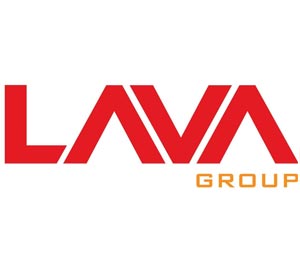5 Must Have Technologies for a Successful Medical Practice

The following guest post was submitted by Aiden Spencer from CureMD.
Medical offices are notoriously behind the times when it comes to technology, despite the fact that patients are eager for them to embrace it. There are many reasons for this, not the least of which is the time, resources and finances needed to implement such changes. However research has shown that the impact of adopting new technologies, while disruptive in the short-term, will bring time-saving advantages to your practice that will soon outweigh any temporary drawbacks.

Which healthcare technologies are a “must have” to run a successful practice?
Many doctors express reluctance to commit the time needed to adopt and learn new technologies. Some have also voiced concern about losing one-on-one time with patients if they are forced to look at screens during their brief patient encounters. Their concerns may be valid temporarily as they learn how to use the new systems, but in the long term the wealth of benefits these new solutions present will offer time-saving advantages that are easily recognizable.
The abundance of technological options can be daunting at first, so investing in a company such as CureMD to help with practice management solutions may be the first step toward going digital. Consultants like these can lay out all the options and costs involved for your office, as well as implement staff training and smooth the transition to using new technology.
Electronic Health Records (EHR)
Contrary to what you may think, EHR ultimately allows office and professional staff to spend more one-on one time with patients, strengthening relationships and potentially bringing in more business. Eliminating the common front desk clutter, loose papers and racks upon racks of files makes for a more organized office, and one that is likely to be attractive to patients. Once someone’s record is electronic, it is easier to track and make changes to their information. Follow-up appointments, medication reminders and test results can all be emailed to the patient expediently. Less handling of papers leads to fewer errors and creates a digital trail when something is amiss. Office staff will spend fewer hours managing paperwork, freeing up time for better utilization of their skills. EHR allows doctors to access patient medical history going back for many years, and to easily review and integrate information from other providers into their systems.
Patient Portals and Online Scheduling
Research shows that patients are gravitating toward digitally-based practices which give them easy access to managing their health via a smart phone or laptop. Patient portals allow patients to see their medical history and test results, make appointments, request prescription refills and in some cases email doctors or medical staff for help or information. In turn, this may bring in more business as patients are more likely to choose doctors whose practices make their lives easier and limit time spent on the phone. Having access to their medical records can even help cut down on errors as patients are likely to point out any mistakes they see on their record.
Patient portals are also advantageous to physicians, who are better able to manage chronic conditions with online monitoring and communication. They can collaborate with other providers or make referrals and ultimately keep patients happier with more comprehensive management of their health.
Card Scanners
Going digital is made a whole lot easier by investing in a card scanner that takes copies of both sides of drivers’ licenses and insurance cards in one pass to add to the medical record. Card scanners are relatively inexpensive, compact and are powered via a USB connection to your office computer. Card scanners can not only save time but also cut down on errors or missing information.
Laptops or tablets for exam rooms
The benefits of laptops, PDAs or tablets for physicians are abundant. Offering portability foremost, they allow physicians instant access to the entire medical record of the patient they are treating. Over time, the medical record can be enhanced with information from other providers, along with lab and imaging results. An even more substantial medical benefit is that doctors can utilize the latest information on the internet for evidence-based guidelines to help shape their treatment decisions. They can also research less known diseases, which is especially useful in current medicine where scientific investigation has uncovered such a vast array of disorders, it’s not possible for every doctor to recognize all symptoms. It can thus make diagnosing and treating illnesses much easier. Doctors can also access telehealth information and data obtained from remote patient monitoring in order to keep tabs on their patients with more chronic illnesses.
Practice Management Systems (PMS)
Automating your practice using a top-notch management system provides many options that can eliminate the time-intensive administrative tasks of the past. Choosing the right PMS is key and includes not only medical billing software, but also a means to integrate clinical, financial and administrative operations to maximize productivity. Most PMS will include features such as:
• appointment scheduling and text or call reminders
• incorporating demographic information from ID cards correctly into the patient record
• verifying insurance and eligibility
• tracking patient financial responsibilities in order to collect copays
• generating administrative reports
It is important to understand the features and system requirements of PMS and recognize your specific practice needs in order to facilitate an easy transition. Additionally, you need to make sure that your software complies with federal mandates and is backed by solid customer support in the event questions or problems arise.
Author Bio: Aiden Spencer is a health IT researcher and writer at CureMD who focuses on various engaging and informative topics related to the health IT industry. He loves to research and write about topics such as Affordable Care Act, electronic health records, Medical Practice management and patient health data. You can get in touch with him on Twitter: @AidenSpencer15









Hi Aiden, Automation is great but it is not great to become fully dependent on the automation. These technologies definitely ease down the management stress and administration burden. Thanks for sharing.
Thanks for the feedback, we really appreciate you expressing your opinion!
Medical practice is complex, and there’s no golden law for achieve the perfect mind setting. But physicians can get sure way to ensure their practice is ready for evolving technology, increased patient burden and shifting payment models, Bruce Bagley, MD, told a collection of physicians at the 2015 AMA Interim Meeting. At this time five things each practice will require to thrive.
Thank you for the comment!
Good information for Patient and Doctor. Technology is very important present situations.
Thanks for sharing information about the 5 Must Have Technologies for a Successful Medical Practice